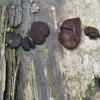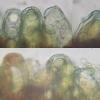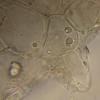
16-11-2025 21:09
 Robin Isaksson
Robin Isaksson
Anyone recognize this acc. to pictures.? Found on

18-11-2025 13:59
Nogueira HéctorNovember 14, 2025 Brazuelo (León) SPAIN Hymenosc

17-11-2025 19:14
herman lambertApothécie discoïde 0.6 cm diam., orangeFace hym�

17-11-2025 21:57
Philippe PELLICIERBonjour,Récolté sur bois de feuillu mort dur, no

17-11-2025 21:46
Philippe PELLICIERBonjour,Récolté sur bois pourrissant de feuillu

14-11-2025 16:26
 Marian Jagers
Marian Jagers
Hello everyone, On dead wood of Cytisus scoparius

15-11-2025 23:22
Mario FilippaHello,this is what I think to be Hymenoscyphus mac

15-11-2025 20:25
 Riet van Oosten
Riet van Oosten
Hello, Found by Laurens van der Linde, Nov. 2025
 Hello forum,
Hello forum,how would you call this Pachyella? Growing on wood in a brook, not tested for latex presence.
Very short outgrowths on excipulum. Asci with croziers, IKI+b (type W).
Spores *18.5-21.5(22.3) × (10.3)10.7-11.7(11.8) um, X = 19.8 × 11.2 um, Q = 1.67-1.77-1.90,
with very fine ornamentation.
P. pseudosuccosa seems close, but the flesh didn't turn yellow.
Thank you in advance.
Viktorie

Although the spore ornamentation is very close to those of P. pseudosuccosa, the latter is very different (see attached picture) and has hyphoid hairs on the outer part of excipulum.
Is it really a Pachyella? It seems there is no gelatinous matter in the outer part of excipulum... Using my key of Pezizaceae, I cannot find any correspondance.
The content of paraphyses reminds me the genus Elaiopezia, but I don't know any species with biguttulate ascospores.
Do you think possible to show the amyloid reaction on top of asci (your picture is too small)?

I compared it with my microphotos of Daleomyces spp. and I think it really is type W.
There was some gel on excipulum while fresh, now with exsiccate I'm not sure which is dried gel a which just some debris. When I first microscoped it, it was already a week after collecting, so perhaps the outer surface has dried out by then(?). How do you recognize gel coating in exsiccates, by staining it with CRB or is it better visible in some medium?

The gelatinous layer is always hard to evaluate on exsiccata, but your material is recent, so you could try to rehydrate in water and use CRB as medium to check this character.
In Pachyella, only P. salicina and P. pseudoampelina are suspected to not have hyphoid hairs, but I don't think your collection could be one of these species.
A DNA sequencing will surely provide an interesting result.

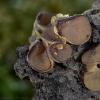
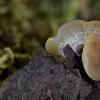
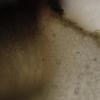
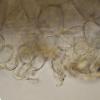
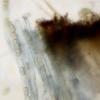
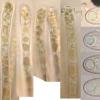
 ornamentation-0001.jpg
ornamentation-0001.jpg